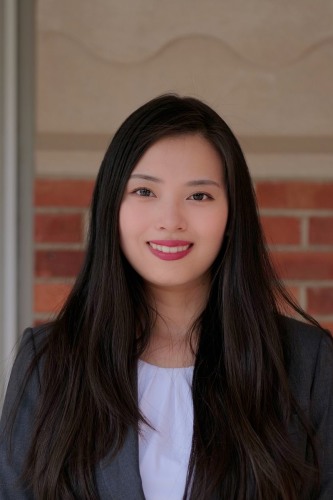A minute with Ying Ma
Ying Ma, CCMB’s youngest professor, discusses her recent paper, early career awards, and big goals for the future.
Tell us a bit about who you are and what you do at DSI.
My name is Ying Ma, and I'm an Assistant Professor in the Department of Biostatistics and also a Core Faculty Member at the Center for Computational Molecular Biology (CCMB) at the Data Science Institute (DSI).
I joined Brown last August, so I've been here less than a year. Before I came to Brown, I was a PhD student in biostatistics at the University of Michigan. It feels very different to be a professor after so recently being a student. I feel very lucky to be a professor in such a wonderful environment, and I deeply appreciate the support I receive from both Biostatistics and CCMB. I’m excited to collaborate with the interdisciplinary centers at Brown as an independent PI and to work with the students here.
What is your main area of research, and how did you come to this specialty?
My research mainly focuses on developing statistical methods and computational tools for addressing biological questions. More recently, I have focused on developing methods for analyzing high dimensional genomics data, specifically for single cell RNA sequencing and spatial transcriptomics data.
By developing these methods and analyzing this type of data, we can identify how different cell types are distributed along a specific tissue. This work has broad applications in cancer biology and biomedical data science.
I began working with spatial transcriptomics data during my PhD. It was exciting that the data could measure the gene expression while maintaining spatial information. However, this data possesses both a statistical and computational challenge, which is challenging and exciting to work on.
You’ve been at Brown for less than a year, but you’ve already accomplished a lot.
Yes, it’s been an exciting year.
I recently had a paper published in Nature Methods, a high impact journal. We developed a method called IRIS; it’s a novel statistical and artificial intelligence tool that helps us understand spatial tissue organization. It can analyze large scale data with an accuracy that has not been achieved by previous methods.
Imagine, for example, that you can treat different spatial layers of tissue as different Lego pieces. We have a Lego set for Mickey Mouse, where the black pieces represent the ears and the red pieces represent the nose. However, when you look at the data, you can’t tell which pieces are black and which ones are red. In order to use your data, you have to identify the different pieces of your structure.
So our tool does that; it can identify which pieces belong to the ears and which pieces belong to the nose. We can know the spatial organization of many sets simultaneously.
Nowadays, data can be accumulated at millions of spatial locations, which creates a huge computational and statistical challenge. We plan to further develop this method to deal with such large scale data.
You’ve also secured funding for future research, right?
Yes, since I came to Brown, I’ve been awarded three pilot awards. I really appreciate this because they are very important for early stage career investigators.
One is from the Brown Center for Computational Biology of Human Disease (CBHD) for a project on developing computational methods for estimating gene-gene networks.
Another is from the American Cancer Society, for investigating heterogeneous embeddings across tumor regions using our novel statistical methods.
The third is from the Brown Center for Statistical Sciences to support early stage investigators. We have a lot of opportunities here at Brown, and I’m very excited about making progress on these three projects.
What are you hoping to achieve in the next few years?
I have a lot of plans, some that are ongoing, and some that I’d like to achieve in the next couple years.
First, on the research side, I’m looking forward to having my own independent publications and getting PI grants in the next couple of years. I hope that I can continue publishing my work in high impact journals, and that it will make an impact on the genomics field. I want to make rigorous and comprehensive statistical methods that can help biologists analyze their own data.
I’d love to broaden my research area and do more collaborations both internally at Brown, and externally outside Brown.
On the teaching side, I will design and teach courses for the Center for Computational Biology graduate program and the Department of Biostatistics. They will focus on statistical computing and applying statistical methods to high-dimensional genomics research.
I also hope that I will have the chance to work more with students and build a mentoring record. I hope that I can be a good mentor, that my students will learn how to do good research from their training with me, and that they will enjoy working with me.
If any students are interested in working in spatial transcriptomics and single cell sequencing, especially in developing statistical and computational methods, feel free to contact me. I’m very open to collaborating with students.
What do you like to do for fun outside of work?
I like to play music. I have several instruments at home. I play the ukulele, guitar, and keyboard. I also enjoy singing. When I was an undergraduate student, I was a vocalist in a band. I also love to do artwork and design.
